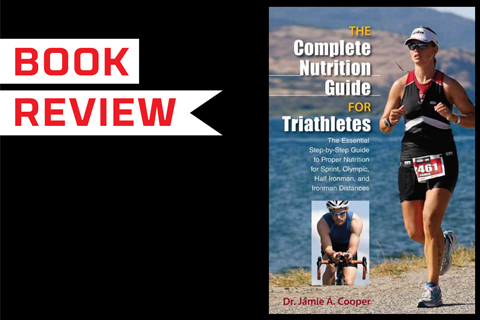Beating the Nutrition Bonk

A great new nutrition resource for triathlon’s fourth discipline
I had the pleasure of reading Dr. Jamie A. Cooper’s new book, The Complete Nutrition Guide for Triathletes, on a flight back from Phoenix a few weeks ago. As I looked down on Tempe Town Lake—the site of my first Ironman triathlon—I wondered how much better I would have felt on that run had I been in possession of this book during my 2008 season.
As a triathlete, assistant professor of sports nutrition, and kinesiology expert, Dr. Cooper has a unique perspective on the topic of sports nutrition. She knows exactly what it feels like to bonk after a brick workout and feel amazing on a run during an Olympic distance triathlon. The best part is she knows why the body experiences these highs and lows and how to correct them.
The comprehensive nature of this new work, which starts with the basics (what is a carbohydrate?) and moves through questions regarding supplementation and weight management, is refreshing. As a dietitian and athlete, I have read pretty much every book on sports nutrition I could get my hands on, and I’ve often thought how confusing many of them would be if the reader didn’t have—at the least—a degree in science. On the other side of the spectrum are expert works that were too simplistic to be of any real help. Dr. Cooper’s book was surprisingly easy to read and understand while being informative and helpful. She breaks down the basics in language that is easy to understand; there’s no need to pull out a Latin dictionary to gain a good understanding of the body’s needs.
Readers may, however, want to pull out a calculator.
In several places throughout the book, there are opportunities to “try things on for size.” You get to calculate your carbohydrate needs, your own weight in kilograms, and several other numbers that are useful when dialing into the perfect nutrition and hydration plan.
While several of my training partners would rather call me up to make a plan for them, I know plenty who would love to get their hands on this book and tackle creating a nutrition plan on their own. This is one of the few resources I would recommend to an athlete who wants to take a crack at crafting a useful fueling plan for both on and off the racecourse. And no worries—if you get stuck, you can always shoot me an email and I’ll be happy to help!






